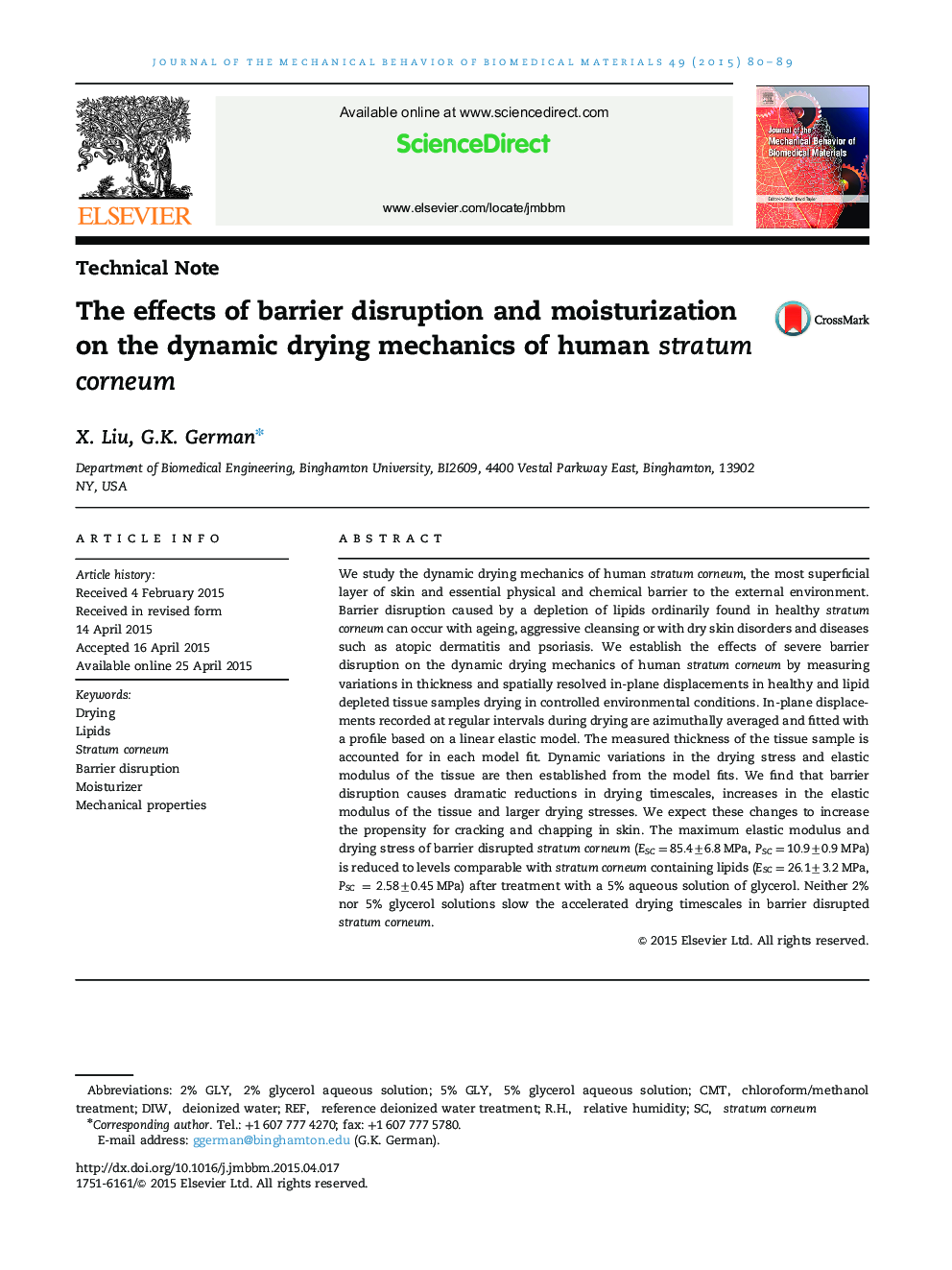| Article ID | Journal | Published Year | Pages | File Type |
|---|---|---|---|---|
| 810586 | Journal of the Mechanical Behavior of Biomedical Materials | 2015 | 10 Pages |
•We examine the drying mechanics of healthy and barrier disrupted stratum corneum.•Disruption quickens drying and increases tissue elastic modulus and drying stresses.•Glycerol treatments do not notably slow drying times in disrupted stratum corneum.•2 and 5% glycerol solutions do not slow the accelerated drying times in disrupted stratum corneum.•5% glycerol treatment reduces disrupted tissue stiffness back to healthy values.
We study the dynamic drying mechanics of human stratum corneum, the most superficial layer of skin and essential physical and chemical barrier to the external environment. Barrier disruption caused by a depletion of lipids ordinarily found in healthy stratum corneum can occur with ageing, aggressive cleansing or with dry skin disorders and diseases such as atopic dermatitis and psoriasis. We establish the effects of severe barrier disruption on the dynamic drying mechanics of human stratum corneum by measuring variations in thickness and spatially resolved in-plane displacements in healthy and lipid depleted tissue samples drying in controlled environmental conditions. In-plane displacements recorded at regular intervals during drying are azimuthally averaged and fitted with a profile based on a linear elastic model. The measured thickness of the tissue sample is accounted for in each model fit. Dynamic variations in the drying stress and elastic modulus of the tissue are then established from the model fits. We find that barrier disruption causes dramatic reductions in drying timescales, increases in the elastic modulus of the tissue and larger drying stresses. We expect these changes to increase the propensity for cracking and chapping in skin. The maximum elastic modulus and drying stress of barrier disrupted stratum corneum (ESC=85.4±6.8MPa, PSC=10.9±0.9MPa) is reduced to levels comparable with stratum corneum containing lipids (ESC=26.1±3.2MPa, PSC=2.58±0.45MPa) after treatment with a 5% aqueous solution of glycerol. Neither 2% nor 5% glycerol solutions slow the accelerated drying timescales in barrier disrupted stratum corneum.
Graphical abstractFigure optionsDownload full-size imageDownload high-quality image (314 K)Download as PowerPoint slide
